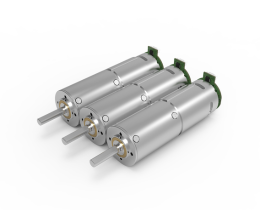Your Gear Motor Questions, Answered: Why a alog Still Matters
Let’s talk about gear motors. Not the flashy, jargon-heavy kind of talk—just real talk. Imagine you’re staring at a project blueprint, wondering how to match torque specs to your application. Or maybe you’re troubleshooting a design hiccup and need a motor that actually fits. That’s where a well-crafted gear motor catalog steps in—not as a dusty PDF, but as a silent partner in your workflow.
.webp)
KPOWER’s gear motor catalog isn’t just a list of products. It’s a cheat sheet for efficiency. Think of it like this: You wouldn’t build a puzzle without the picture on the box, right? The catalog organizes technical details—frame sizes, ratios, mounting options—into something digestible. No flipping through 10 tabs or squinting at tiny datasheets. One question we hear often: “Why bother with a catalog when everything’s online?” Fair point. But here’s the thing: A curated catalog cuts through the noise. It’s not about replacing digital tools; it’s about giving you a roadmap so you spend less time searching and more time doing.
Ever tried comparing motors without side-by-side specs? It’s like tasting soup blindfolded—you miss the nuances. KPOWER’s PDF lays out performance curves, thermal limits, and duty cycles in visual formats. Forgot how IP ratings translate to real-world durability? There’s a section for that. Need to quickly rule out incompatible models? The filtering system acts like a sieve, leaving only what matters.
Here’s a scenario: A client once asked, “How do I balance cost and longevity for a high-vibration environment?” The answer wasn’t in a sales pitch—it was on page 27 of the catalog. A table compared housing materials, lubrication options, and shock resistance grades. No fluff, just facts. That’s the beauty of a resource designed for problem-solvers, not just sellers.
But let’s get real—nobody reads catalogs cover-to-cover. That’s why KPOWER structures theirs for skimming. Bold headers, color-coded performance tiers, and bite-sized FAQs. For example: “What happens if I exceed the rated speed?” Short answer: Heat spikes. Long answer: See page 12 for derating guidelines. It’s like having a engineer’s notes in your back pocket.
Still, a catalog is only as good as the motors it describes. KPOWER’s designs lean into modularity—think Lego blocks for industrial applications. Mix and match gears, shafts, and connectors. Customization isn’t an upsell; it’s baked into the standard offering. The catalog reflects this philosophy, with cross-reference charts showing how components interact.
So, what’s the takeaway? In a world of instant downloads and chatbots, a thoughtfully built gear motor catalog does two things: It saves time and reduces guesswork. KPOWER’s version isn’t a static document—it’s updated quarterly with real user feedback. Because the best resources evolve, just like your projects.
Final thought: Next time you’re knee-deep in motor specs, ask yourself: “Could a 50-page PDF actually make this easier?” The answer might surprise you.


































.webp)

